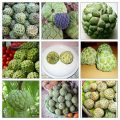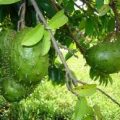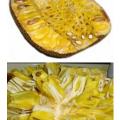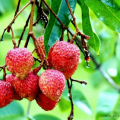Balimbing is a popular expression among Filipinos meaning turncoat or double-faced. This term is commonly used when talking of someone who cannot be trusted. In the field of politics, it is often associated with betrayal where a person would take the side of the candidate from which he or she can obtain maximum benefits.
Getting to know the fruit crop
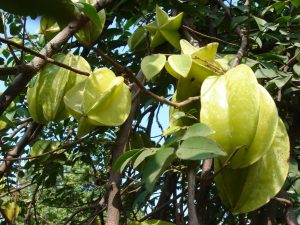
Balimbing is the local name of Averrhoa carambola which belongs to the Oxalidaceae family. The Food and Agriculture Organization of the United Nations (FAO) reports that the fruit crop is known to have originated in Ceylon and in the Moluccas, but has been grown mostly in Asia because of the advantageous tropical climate suitable to the growing of the plant. Having reached a number of countries, this gave rise to the fruit’s different names. In English, it is known as starfruit, carambola, and five corners. The Indonesians and Malay call it belimbing manis, while it is referred to as ma fueang among the Thais and khe among the Vietnamese.
Balimbing is an edible fruit which, though known to many, has not been fully utilized despite its good economic potentials. In fact, it has been included in the book of Dr. Roberto E. Coronel entitled “Important and Underutilized Edible Fruits of the Philippines”. In the book, balimbing is described as a small tree reaching up to 6-9 meters in height. It is characterized by its dark-green colored leaflets and reddish purple flowers clustered in leaf axils. The fruit turns greenish yellow to yellow when ripe and has a sweet to sour taste. It has an oblong to ellipsoidal shape with a translucent, soft, and waxy skin. About 6-9 centimeters long, it presents itself as a five-cornered fruit with its five prominent longitudinal, angular wings. When cut across, it resembles a star hence the name starfruit.
Plant management involves the propagation of balimbing from seeds, which may take 20-25 days to germinate, and growing it preferably in a rich loam soil. Meanwhile, it takes about 4-6 years for a seedling tree to fully blossom and bear fruits. If grafted, it may only take 2-3 years. Varieties such as Fwantung, Arkin, Kembangan, and B11 are among the superior cultivars selected for growing in the country.
Though growers can expect fruiting all year round, recommended harvesting time is from May to August when the heaviest crop comes in. There are no known serious diseases for the plant, but oriental fruitfly is considered as its most mortal enemy. Wrapping and bagging the fruits are done to address this issue.
Maximizing the uses of the underutilized
Whether ripe or unripe, this wondrous crop is used in many different aspects. Filipinos mainly use balimbing for its culinary and food value. Usually eaten fresh and raw, this fruit may also be sliced and served in salads and dishes. It can also be processed and made into jam, jelly, or preserve or even as a simple carambola juice. Consumption may provide the body some of the essential vitamins and minerals it needs including calcium, iron, thiamin, riboflavin, niacin, and ascorbic acid.
Additionally, its wood can be used for firewood, timber and construction purposes. Due to the potassium oxalate it contains when unripe, balimbing may also substitute for dyes. Its juice extract can remove stains in cloth or polish metal as well. It also becomes an ornamental plant in gardens and parks because of the complementing colors of its leaves, flowers, and fruits.
In traditional medicine, the fruit has been utilized for its therapeutic potentials to ease and treat many illnesses and diseases. In India, a ripe fruit is used to staunch hemorrhages while the dried ones are taken to provide relief for fever and eye afflictions. The oxalic acid it contains makes it a useful laxative. Apart from its fruit, other parts of the plant are also found to be of medicinal value such as the leaves to lighten headache.
It is also administered to treat skin impurities. In some Southeast Asian countries for example, its flowers are rubbed on the skin affected with dermatitis, while its inner bark is used together with other materials to soothe prickly heat.
Investigative studies are also being done in other countries to further explore the potentials of this crop. In Bangladesh, a study was conducted to explore the crop’s antibacterial activities while another study in India sought to determine the possibility of the fruit as a raw material for wine production.
With the saying “too much of anything is bad”, too much consumption of this fruit may upset a balanced diet, or worse pose threats to human health. There are documented cases in some parts of the world where the consumption of the fruit by individuals suffering from kidney-related illnesses resulted to discomforts such as nausea and vomiting, among others. Hence, extra precautions are needed if consuming the fruit as its oxalic acid may prove harmful. Further studies are needed to establish its nutritional limits. .
There are indeed true potentials awaiting this fruit with myriad uses. What today is an unnoticed fruit may become a promising commodity in the future. Extensive research and development efforts not only for balimbing but also for other underutilized crops in the country should be pushed as their enhanced use can contribute towards achieving food security and improving the well-being of the people.
———-
Sources:
1. AgroForestry database: a tree species reference and selection guide. Averrhoa carambola. Retrieved 11 January 2013 from http://www.worldagroforestry.org/sea/products/afdbases/af/asp/SpeciesInfo.asp?SpID=267.
2. Coronel, R. (2011). Important and underutilized edible fruits of the Philippines.
3. Manda, H. et.al. (2012). A complete review on: Averrhoa Carambola. World Journal of Pharmacy and Pharmaceutical Sciences. 01(01), 17-33. Retrieved 11 January 2013 from http://www.wjpps.com
By: Anne Camille B. Brion, BAR Digest October-December 2012 Issue (Vol. 14 No. 4)
